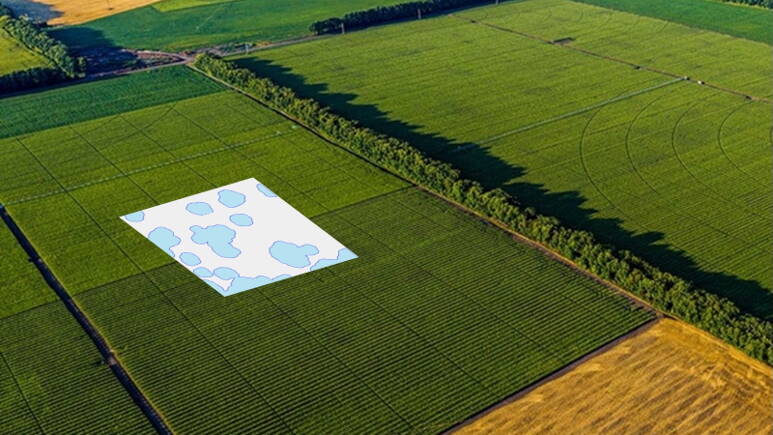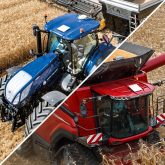If Canadian farmers are waiting for the wave of artificial intelligence (AI) to hit the agriculture industry, they’re a bit late, according to a technology expert and consultant. It’s already here.
And although he’s not a farmer himself, Walter Schwabe told producers attending the recent CrossRoads Conference in Calgary that if farmers don’t try to embrace this powerful technology on their own farms, they’ll be left behind both in productivity and profitability.
Born and raised in Edmonton and now based in Vernon, B.C., Schwabe has been researching, studying and consulting on technology for more than 25 years. He has been researching artificial intelligence and blockchain technologies since 2017.
Read Also

Geco, Gowan team up on predictive weed control using multi-year imagery
A new partnership between Geco and Gowan brings predictive weed mapping to more Prairie farms, using multi-year imagery to forecast patch-prone zones and support targeted herbicide plans.
Schwabe delivered somewhat of a sobering message to about 500 producers about the potential impact of AI, not just on the agriculture industry but the world in general.
With the proper control and guidance, he noted, AI could be used for the good of humanity — and if left unchecked or in the wrong hands it could also be very harmful.
To put the power of AI in context, “Einstein had an IQ of about 160 where as AI today has an IQ of about 150,” Schwabe says. “By 2034 (about 10 years from now) AI will have an IQ of 1500 and by 2045 (it is a fantastic number) AI will be a billion times smarter than humanity. In a few more years from today human beings will not be the smartest entity on the planet.”
He quotes Mo Gowdat, a former executive with what was then known as Google X — a secretive tech research and development facility run by Google parent Alphabet — as saying, “Let me state it bluntly… the age of humanity being the superior intelligence on the planet is over.”
Complex technology
In its simplest form, artificial intelligence is a field that combines computer science and robust data sets to enable problem-solving. In general, AI systems work by ingesting large amounts of data, analyzing the data for correlations and patterns, and using these patterns to make predictions about future states.
AI can give machines the ability to perform the cognitive functions associated with human minds, such as perceiving, reasoning, learning, interacting with an environment, problem-solving, and even exercising creativity. In other words, AI enables machines to think.
Dark scenario
The development of AI has caused great concern among the leading technology experts in the world. Where is headed? How will it be used? On the “dark AI scenario,” Schwabe says, the reality is that “whomever controls AI, controls humanity.”
In these relatively early stages of AI development, Schwabe says programmers must program AI for humanity and that means AI “must be embedded with altruistic human values. The world needs to come to a consensus on AI ethics and values… but whose values do we use and who gets to decide?”
In a simple example, he says, if the Alberta government came up with guidelines for AI ethics and values, that doesn’t mean all the other provinces in Canada would agree.
“And that’s just here in Canada,” says Schwabe. “How are we going to develop a consensus among all the countries in the world, and who gets to decide?”
READ MORE: Artificial intelligence, real diligence
If left without controls, or programmed with harmful values, the dark side of AI could be used for sophisticated cyberattacks. It could be used to develop biological pathogens. It could be used to overtake governments and for mass manipulations of the populations, or for job displacements resulting in economic collapse. It has potential to become self-replicating, intent on self-preservation. If AI perceived a threat against itself, it could orchestrate actions to eliminate the threat.
While the dark scenario is still somewhat “out there,” Schwabe does urge individuals and organizations to be proactive at the political level, calling on governments to develop an ethical AI governance framework.
Pointing to the CrossRoads Conference’s founding organization — the Farm Tech Foundation, which is a collaboration of Alberta Canola, Alberta Pulse Growers and Alberta Grains — he urged the foundation to write an open letter to the minister of agriculture, calling for safe development of AI and to provide industry support as AI technology is implemented.

“It is absolutely critical that we align AI with human values,” Schwabe says. “And we need to use whatever measures we can to be on top of the AI development community now, to ensure the technology is programmed to represent humanity.”
The bright scenario
On the bright scenario side, Schwabe says there is a great deal of AI-driven technology already available to the agriculture industry with much more to come. He urged Alberta and Canadian farmers not to dismiss the technology as a temporary fad. It is here to stay, and its influence will deepen in coming years.
He offers this formula: Farmer + AI > Farmer—adaptability = superpower. In other words, the farmer using AI has greater opportunity than the one who doesn’t adapt. “Farmers need to keep pace and adapt to AI because if you don’t you will be combined over and lose out on both productivity and profitability,” he says. “A farmer using AI is the key to being a superpower.”
Schwabe says the Canadian agriculture industry is about 10 years behind the U.S. in adopting AI technology — and North America is also years behind producers in Europe, who are “adopting AI technology at a rapid pace.”

In equipment and technology, AI is already available to benefit farmers in virtually all production and management areas: improved data management, increased production accuracy, improved crop management, healthier soil, healthier crops, and more efficient use of supply chain partners — all leading to saving time and increasing profits.
The widely respected management consultancy McKinsey and Company, in a 2020 study looking at AI, predicted digital farming could boost annual global ag production by $500 billion by 2030.
READ MORE: Processing cattle with artificial intelligence
Schwabe reviewed some of the current AI technology already being used in parts of the world. It included robotics and autonomous equipment used for precision seeding, pest control, automated plant mapping and automated harvesters with and without tractors. He highlighted satellite imagery used for weather analysis, drones and bots used for real-time crop monitoring, soil sensors and targeted weed spraying down to the centimetre with automated robotics.
As producers develop their own AI smart farm systems, he urges them to develop digital literacy — know what digital tools are available, develop computing skills and make use of software applications.

Since data is key, he also urges producers to develop data literacy — learn how to gather, structure, interpret and analyze data — and he urged them to be adaptable and to embrace the workflow change and the need for new skills.
Producers don’t need to know everything themselves, he says — they can also make use of AI agri-tech service providers, such as Semios, Farmers Edge Labs, Resson and Terramera.
As part of a smart farm strategy, Schwabe says producers need to develop their objectives, which should include improved efficiencies, and improving profitability, while working less. That means identifying AI tools that can be used on the farm — and in the process you’ll need to either hire or train and upskill the farm’s workforce.
“It is not a question of ‘if’ those skills will (be needed) — that’s history,” Schwabe says. “Those new skills will be needed and probably sooner than later.
“This change in technology and higher skill sets will need financing. That’s why producers need to be working with their government departments, banks and other private industry sectors to make them aware that technology is moving faster than ever before.”
















